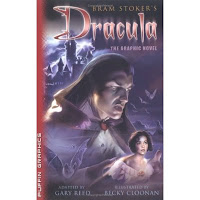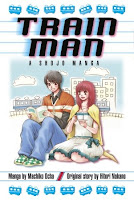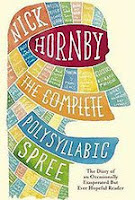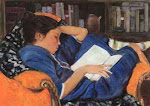I'm currently biting my nails over Elizabeth Kostova's
The Historian, which is part-detective, part-horror fiction, about a group of scholars investigating the truth behind the legend of Vlad the Impaler, the cruel medieval ruler whose crimes formed the basis of the myth of Dracula.
Reading this book, prompted me to re-read Bram Stoker's Dracula. Coincidentally, two new versions of the classic tale arrived on my desk about a month ago: an illustrated edition, and a graphic novel.
 Review by DAPHNE LEE
Review by DAPHNE LEE
THE ILLUSTRATED DRACULA
By Bram Stoker
Illustrated by Jae Lee
Publisher: Studio, 400 pages
(ISBN: 978-0142005156)
PUFFIN GRAPHICS: BRAM STOKER’S DRACULA
Adapted by Gary Reed
Illustrated by Becky Cloonan
Publisher: Puffin, 176 pages
(ISBN: 978-0142405727)
AS my eldest sister (who is 13 years older than me) was a fan of the macabre, in particular vampire stories, I was familiar with the legend of Count Dracula from a tender age. My earliest brush with the aristocratic fanged one was even before I turned five. My sister took me with her to watch Christopher Lee in the Hammer House of Horror cult classic, Dracula. This was probably very silly of her, but, thankfully, I suffered no lasting damage from the experience. (Some may disagree though.)
I have next to no recollection of the movie (although I do remember Dracula’s blood-red eyes), but I understand that although it is based on Bram Stoker’s Dracula, the script is not faithful to the novel.
For example, the film begins with Jonathan Harker arriving at Castle Dracula with the intention of killing the vampire. Although he manages to destroy one of Dracula’s brides, he is overpowered by the Count and is turned into a vampire. His fiance meets the same fate and both are killed by vampire-hunter Van Helsing.
In the novel, Jonathan is a solicitor at the English law firm hired by Dracula to purchase property for him and when he arrives at Castle Dracula, he has no idea that his host is one of the undead. He manages to avoid being bitten, although he does end up very ill. Later, his fiance, Mina’s life and soul is threatened by Dracula when the vampire sets up home in Britain. However, Stoker allows the couple a happy ending.
I suspect the movie wasn’t too scary or I would have remembered more of it ... just as I remember The Exorcist. The book, on the other hand, is one of the creepiest tales of horror I have ever read. It comprises the various characters’ journal entries as well as log entries, letters and newspaper reports.
I’ve never been able to believe that anyone writes such detailed journals as they do here (or in Bridget Jones’s Diary for that matter), complete with dialogue, but that may just be me projecting my own sloth onto others. It doesn’t matter though, because the reader gets so drawn into the story that unfolds that he soon forgets its source and is simply swept along by the events described.
Like the best scary stories, the details are subtly drawn, relying on the power of suggestion and imagination to horrify and repulse. The scene in which Jonathan Harker looks out from his bedroom window, in Castle Dracula, and sees the Count crawling down the wall is one of the most powerful in gothic fiction.
Another episode that makes a lasting impression is set aboard the ship carrying Dracula to England. The account, from the ship captain’s log, is dark, despairing and heavy with fear, dread and nail-biting suspense: One by one, ship hands disappear and the first mate suspects the cause to be supernatural. When his worst fears are confirmed, the captain makes a brave and horrifying decision. The episode ends with a newspaper article about the arrival of the ship in port with the dead captain strapped to its wheel.
The report is written in a dispassionate and stark journalistic style, but the facts, as they stand, are ghastly enough to make your hair stand, your flesh crawl, and all the other signs and symptoms connected with having the daylights scared out of you.
Two new editions of this classic story were published last year: an illustrated version and a graphic novel. Marvel Comics regular Jae Lee provides the artwork for the former – mostly terribly slick and sophisticated portraits, in which the subjects look posed. It’s all very beautiful and very cold, and not terribly inspiring. I also expected more action-oriented studies, for example, of the infamous wall-scaling scene.
novel. Marvel Comics regular Jae Lee provides the artwork for the former – mostly terribly slick and sophisticated portraits, in which the subjects look posed. It’s all very beautiful and very cold, and not terribly inspiring. I also expected more action-oriented studies, for example, of the infamous wall-scaling scene.
I prefer the illustrations in the graphic novel, drawn by Becky Cloonan, which, although rather amateurish, possess a liveliness missing in Lee’s work.
Gary Reed, scriptwriter for the graphic novel, has done an admirable job, too. Stoker’s fans will appreciate how he has condensed the story without losing any of the marvellous atmosphere of the original, while those unfamiliar with the novel cannot fail but be enticed to read it.




